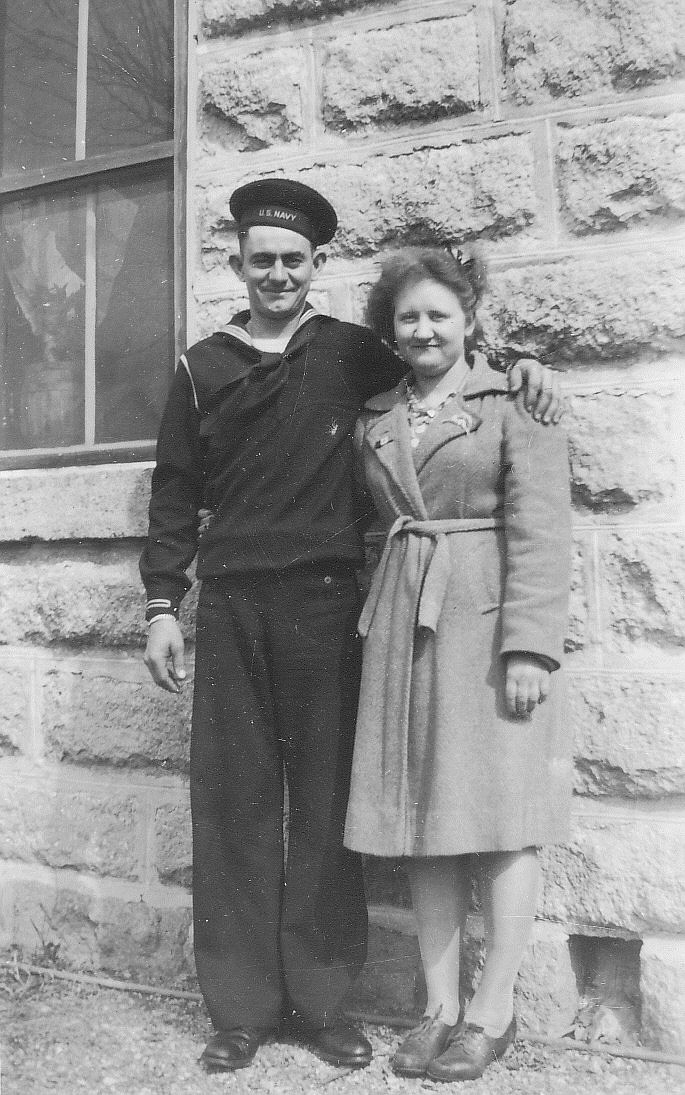The years prior to World War II extracted a heavy price on the Boehmer family as it toiled to maintain a farm near the community of Rich Fountain.
Sylvester Boehmer, one of six children, mourned the loss of his mother, who passed when he was only 10 years old and was later only able to finish the fifth grade since he needed to help his father work their farm.
Tragedy again struck in January 1944 when Sylvester's younger brother, Stephen, drowned after the vessel he was aboard struck a mine and sunk off the coast of Italy while he was serving with the U.S. Army. This loss remained fresh in the family's thoughts when Sylvester received his draft notice months later and was assigned to the military branch whose primary mission was on the seas that had taken his brother's life.
"My father entered active service with the U.S. Navy on Dec. 6, 1944," said Mary Kay Hager, one of Sylvester Boehmer's two children. "He entered the service from St. Louis."
The 25-year-old recruit was sent to the U.S. Naval Training Center at Great Lakes, Illinois, spending the next several weeks undergoing the basic training requirements to earn the revered title of "sailor." He was then sent to Camp Peary, Virginia, which at the time was surging with recruits who would serve in naval construction battalions known as "Seabees."
Shortly after his arrival on the East Coast, documents maintained by Boehmer's family indicate his temporary transfer to the West Coast and subsequent orders that would lead to an overseas deployment.
"We know some of what was going on from letters my father wrote home during the war," Mary Kay Hager said. "He wasn't engaged to my mother, Alvina Pope, at the time, but he would write to her and also to his father and sisters."
In a written summary, Sylvester's son, Stephen (named in honor of his uncle who died at sea in WWII), noted that on April 2, 1945, his father wrote from San Bruno, California and "talk(ed) about being a guard for a WAVES barracks, bank and post office." He added, "In his May 22, 1945, letter, he says he is 'somewhere in the Pacific.'"
Correspondence received by family the following month established Boehmer was assigned to Naval Supply Depot 926 on the island of Guam. According to an article on the Naval History and Heritage Command website, Guam had to be "captured from the enemy and cleared of debris before construction could begin."
In his book "Guam 1941 & 1944: Loss and Reconquest," Gordon L. Rottman says, "The seizure of Guam in December 1941 was one of the Imperial Japanese armed forces' first victories in the Pacific War. The July 1944 battle followed on the heels of the American assault on Saipan and the Battle of the Philippines Sea, which advanced the U.S. forces into the heart of Japan's pre-war territories."
As the previously cited U.S. Navy article related, Guam was considered a critical military objective and the subsequent supply depot built there became one of 15 scattered throughout the Pacific during the war. Additionally, it was "capable of supporting one-third of the Pacific fleet" and possessed "the replenishment storage necessary to restock every type of vessel with fuel, ammunition, and consumable supplies."
"We remember (Sylvester) telling us that he served in Guam on a small shuttle boat that helped transfer supplies from the larger ships in the harbor to the unloading facilities located on shore," recalled his daughter, Mary Kay Hager.
Boehmer wrote to his family on Sept. 15, 1945, about two weeks following the surrender of Japan aboard the USS Missouri in Tokyo Bay. He said he had what his fellow sailors referred to as "the best job on the island of Guam," learning to operate small boats under the guidance of the "Cox" (coxswain) - the sailor in charge of the craft.
He would again write in Jan. 3, 1946, advising he was still stationed on the island but looked forward to returning home. Less than a month later, his sister wrote a letter to the War Department pleading for Boehmer to be released from service since their father, Frank, was ill and hospitalized.
Although there were four brothers in the family, Stephen had died in the service in early 1944 and Louis was stationed in Japan with the U.S. Army, which left only their youngest brother, Andrew, to assist with the farm responsibilities.
Their father died from colon cancer Feb. 5, 1946, and Sylvester did not receive his discharge until April 23, 1946. Less than three months after Sylvester's return home, Andrew was drafted into the service, and Louis did not receive his discharge from the Army until October 1946.
"The letters my father wrote back to my mother have been lost," Mary Kay Hager noted. "But it wasn't long after he was discharged that they were married on June 15, 1946."
In addition to becoming the father to two children, Boehmer eventually moved his family to Jefferson City. He later became a mechanic and worked a number of years at the former McKay Buick, from which he retired. An active member of the American Legion and VFW, he died July 20, 2000, and was laid to rest in Resurrection Cemetery.
"My father and his siblings had a rough upbringing in losing their mother, the death of a brother in the service and then their father, but I know that he was quite proud of his service," Mary Kay Hager said. "I can remember he saved his uniform and had a display made for his medals."
She added, "And even though he never spoke about his service much to me, I think it is an interesting story of four brothers who had to serve and a family that was greatly impacted by war."
Jeremy P. Amick writes on behalf of the Silver Star Families of America.

